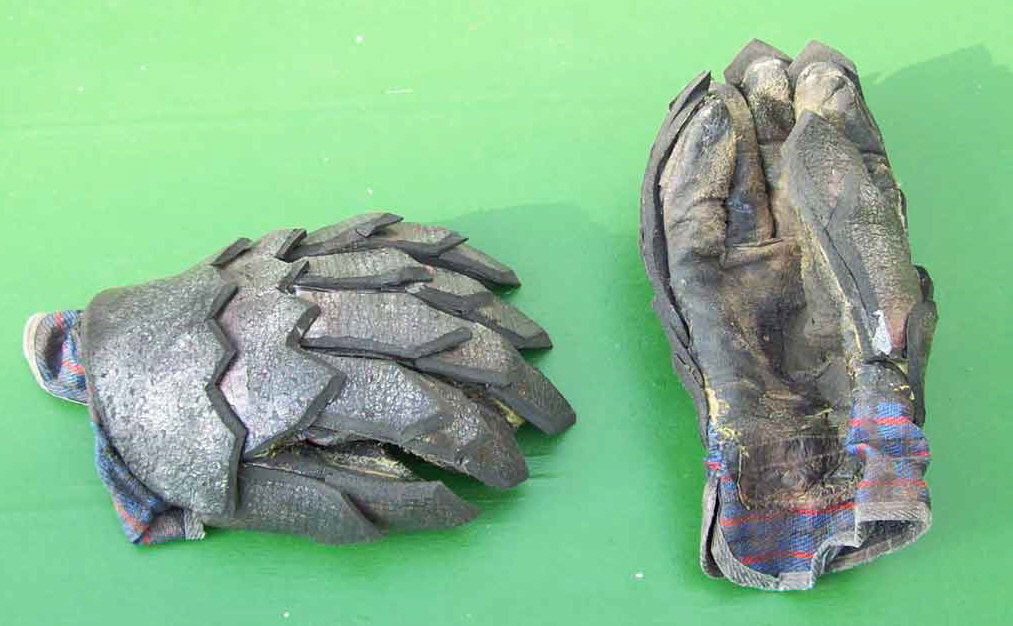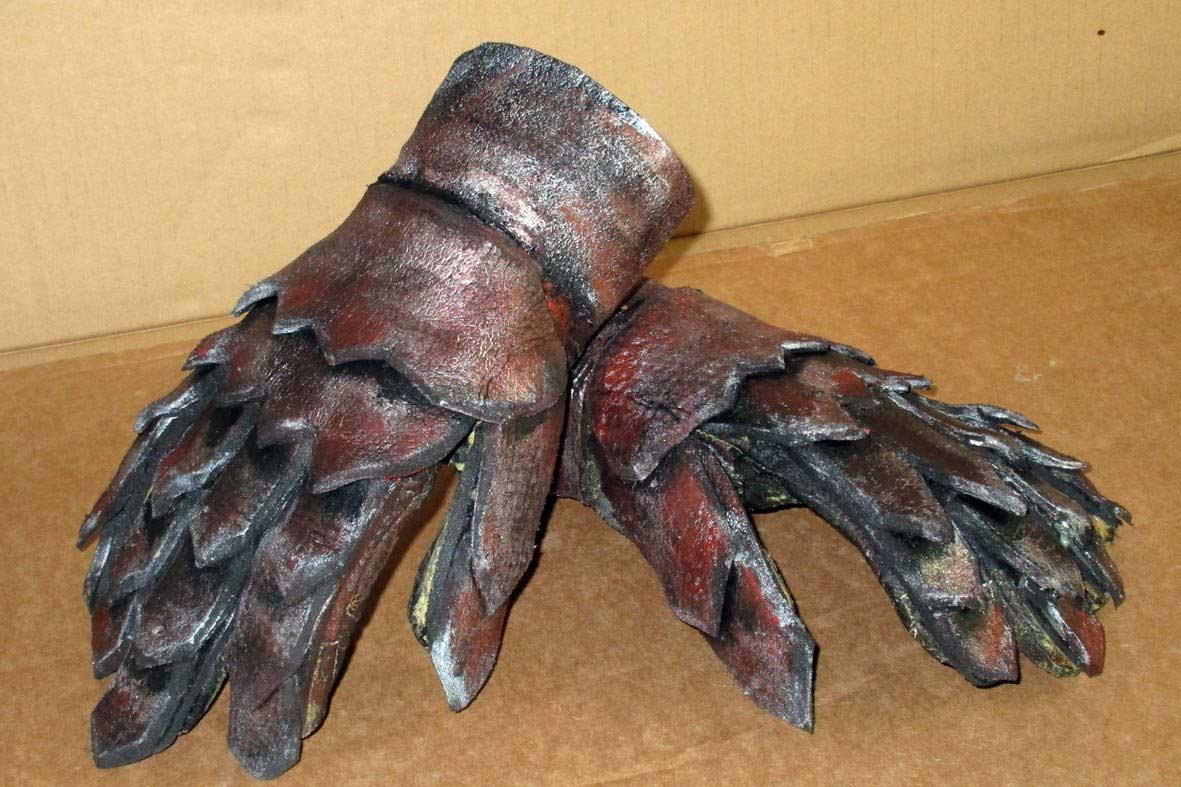|
|
|
For a few days now the baron of Tilgen has been asking himself who stole his favourite boar and what might have become of it- the critter is too old for butchering and mainly constists of bad manners. Today, the question will be answered by some ratmen... |
|||||
 |
|||||
|
The mask is carved out of open- pored matress- foam with a steak- knife (btw: I just notice that either the english language is abundant with hyphenated expressions or Iīm doing something wrong here..). Ok, back to topic: The material isnīt good for details but any amount of these could be added with other sorts of foam. Procedure: The mask is attached with a strip of non- elastic, tear- resistant, non-fraying cloth about 3 fingers broad that is glued over the complete backside of the mask. Cut it away where it covers eye- or nose/ mouth- apertures. The relatively broad strip of cloth is knotted tightly behind the base of the skull. There it will securely hold the lightweight mask without disturbing the wearer. The back of the puppeteerīs head -disguised under the hood- complements the form of the creatureīs head. |
 |
|
The hood is a “cut- out- model” that leaves the creatureīs ears sticking out. It is closed under the face to disguise the puppeteerīs neck. Colours: Acrylics. Best method to achieve an even, paintable, still slightly flexible and very tearproof surface takes one day longer but isnīt even expensive: Glue // cloth// glue. Painting techniques are rough shading and drybrush in three steps. See which parts are dark and which are light. When during painting yout think you might be too light, youīre still too dark. The area around the puppeteers eyes should be blackened, but we need the eyes to be seen, so no morphmask this time. Nevertheless I generally recommend to wear a balaclava under any mask. |
 |
|||||||
|
Above & below: The maske from the inside and below. All foam- masks insides look similarly to this one. The whole thing is held by broad, nonflexible strips of cloth at eyelevel. Contact faces are the forehead and nose bridge. There is enough air supply via the big opening for mouth & nose. The maskīs inside can be treated with desinfection- spray if desired. Many NPCs also bring their own balaclavas. |
|||||||
 |
|||||||
 |
|||||||
|
The overlarge head needs extra broad shoulders (and a large NPC). |
 |
|||||||||||
 |
|||||||||||
|
Above left: The tunicīs inside with the false shoulders The shoulderīs enlargements should be attached more on the back. If you put the pillows onto the puppeteerīs shoulders instead the neck will vanish and the costume looks like a football- armour worn under the tunic. |
|||||||||||
 |
 |
||||||||||
|
Above: The hands are made of cheap working gloves with foam- plates; grounded black and drybrushed metal, washed black- but obviously have to be repainted.... |
|||||||||||
 |
|||||||||||
|
Above: Hog- action. The above- average- sized NPC with the artificially broadened shoulders and the oversized head barely fits through a door and is an intimidating opponent. Although his vision is limited sidewise by the “channels” of the mask, his line of sight forwards is unhindered. Attention: Normally you can see your own feet in your peripheral vision. Monsters are denied this luxury and thus have to tread very cautiously in rough terrain. |
| [Home] [Deutsch] [English] [about me] [whatīs new] [Contents] [about monsters] [faqs] [other sites] |